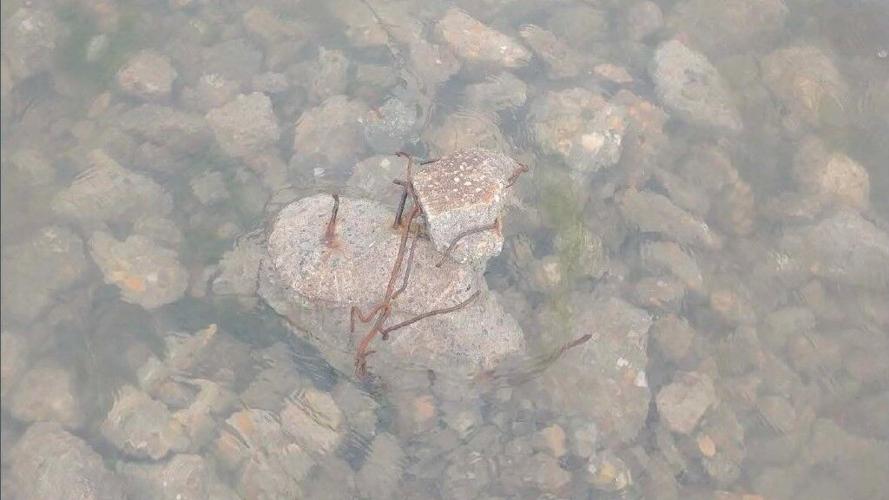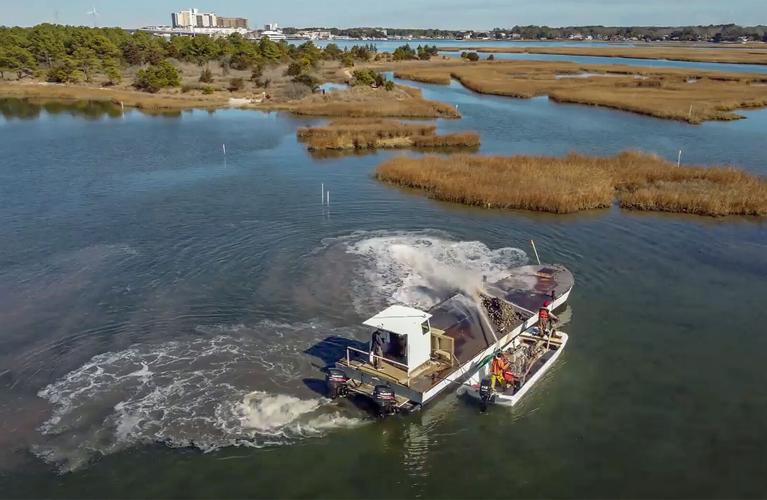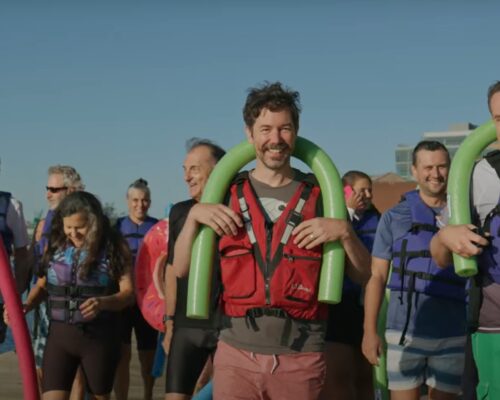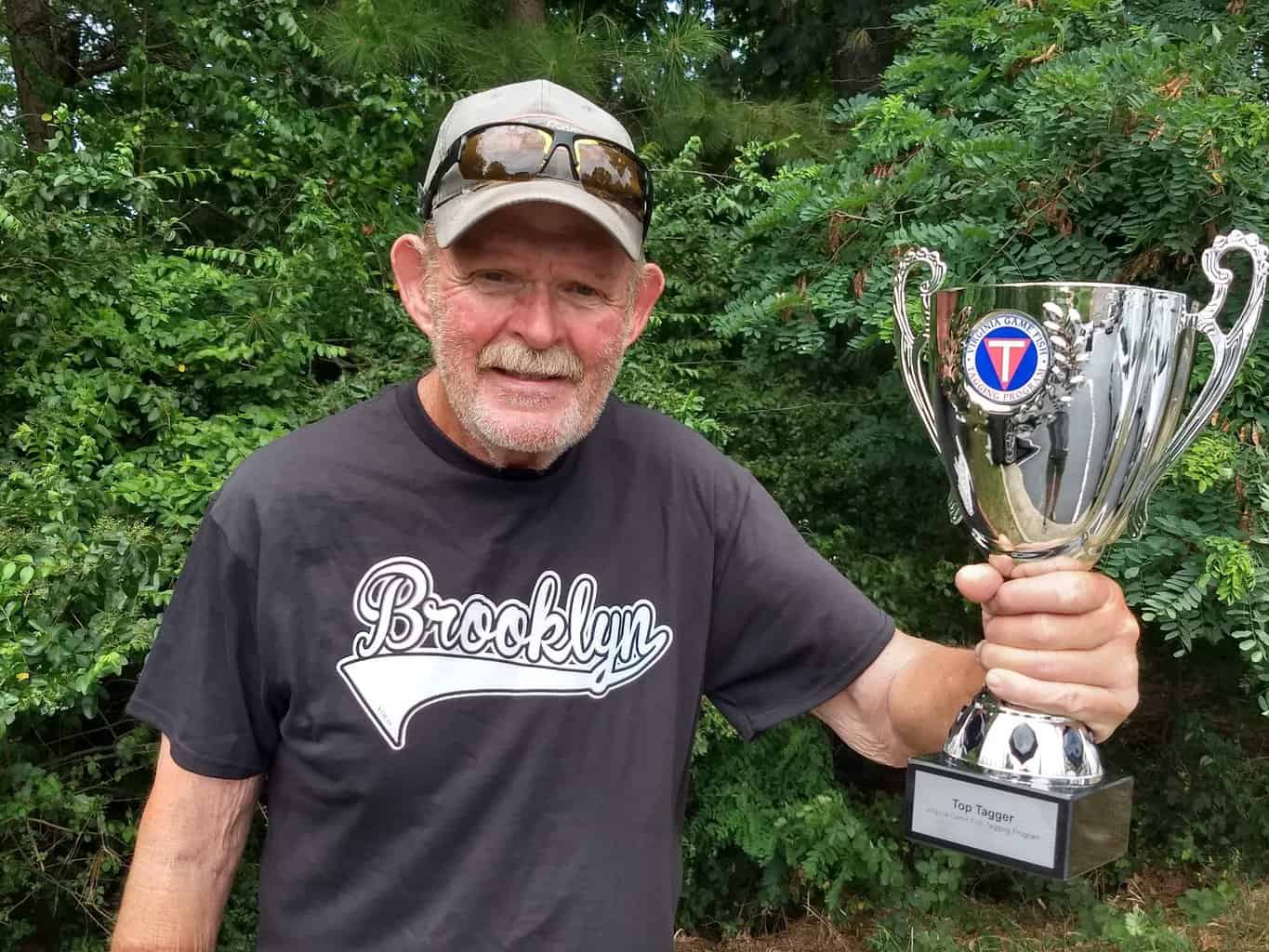By Timothy B. Wheeler, Bay Journal News Service
Back in the spring, Lynnhaven River Now was celebrating its efforts to rebuild the oyster population in one of the Chesapeake Bay’s most developed watersheds.
Undertaking the largest restoration project in its 20-year history, the nonprofit group started by spreading 190 barge-loads of crushed, recycled concrete across the bottom of Pleasure House Creek, one of the Lynnhaven’s tributaries.
The Chesapeake Bay Foundation, the Lynnhaven group’s partner on the project, followed up by topping the underwater ridges with a thin layer of shells bearing fingernail-size baby oysters.
But then waterfront residents began complaining about seeing chunks of asphalt, metal wires and steel rebar mixed in with the concrete being put in the water. A state senator responded by holding public meetings to air residents’ grievances. He pressed authorities to investigate, and in July the Virginia Marine Resources Commission ordered CBF to completely remove everything put in the Lynnhaven so far this year.
The snafu has tarnished the reputation of the two environmental groups, at least in the eyes of some riverfront residents.
“The public confidence in the people who are supposed to be protecting the resources the most, [in other words] Lynnhaven River Now and Chesapeake Bay Foundation, have taken a hit. That’s a polite way of saying it,” said Charles “Chuck” Mehle, a longtime waterfront resident and former community association president who was among the project’s vocal critics.
It’s also roiled other restoration efforts in the Lynnhaven, which is one of five Bay tributaries in Virginia where the state has pledged to complete large-scale revival of oyster habitat by 2025. Waterfront residents are now criticizing plans by the U.S. Army Corps of Engineers to create more oyster reefs in the river.
Both CBF and the Lynnhaven group say they remain committed to restoring the river’s once-fabled oyster population, and they hope to work out a mutually satisfactory remedy for the problems Virginia authorities have cited with their reef work this year.
“We understand that people are disappointed by these events,” said Chris Moore, CBF’s senior regional ecosystem scientist, “and right now we’re working with the VMRC and other state agencies and other partners to make things right.”
Oyster restoration has enjoyed broad support, at least in concept. The water-filtering bivalves are seen as an essential component of the long-running effort to improve water quality and fish habitat in a waterway that was once closed to shellfish harvesting because of pollution.
“There’s not a person around that does not believe that oysters are good for the water here and wants to see oysters flourish in the river,” said Mehle. “Oysters are good. It’s the [reef-building] techniques and details that we’re concerned about, the methods.”
Lynnhaven River Now and CBF have partnered for years with federal, state and local agencies in the effort to restore 152 acres of oyster habitat in the river. Between the reefs that were already there and those added over the past couple decades, they are within roughly 40 acres of the goal.
This year, with $500,000 in grants from the National Fish and Wildlife Foundation, the two groups aimed to build three separate reefs. They decided to use crushed, recycled concrete instead of following the past practice of building the reefs with fossil or recycled oyster shell, which are in short supply and increasingly expensive.
Lynnhaven River Now said in its April press release that research and field experiments had shown crushed concrete to be “the next best thing” to shells for creating a home for oysters. As an added benefit, the City of Virginia Beach pledged to donate the concrete rubble it had amassed from various maintenance and demolition projects.
Soon after the work began, the VMRC notified the groups it had spotted metal wire and asphalt atop one of the new reefs, according to the agency’s documents. In response, Lynnhaven River Now beefed up its screening of the reef material before it got put overboard, CBF’s Moore said.
But after getting more complaints from residents, the VMRC checked again in May and found more “unauthorized materials,” including metal wire, plastic and asphalt on more than one reef. It also found one reef built too high off the bottom and another exceeding its prescribed footprint. On June 2, the VMRC ordered work on all three reefs to be stopped.
In a bid to get back on track, CBF and the Lynnhaven group submitted plans to fix the problems. Moore said the VMRC even allowed work to start on fixing one reef.
But the public outcry grew, drawing the attention of state Sen. Bill DeSteph, a Republican representing Virginia Beach. He invited residents to voice their complaints at public meetings in June and went with state and federal regulators to inspect the reefs.

Karen Forget, Lynnhaven River Now’s executive director, acknowledged errors had been made, noting it was the first time her group had built reefs using crushed concrete.
On Aug. 11, CBF submitted a remediation plan to VMRC that estimated total removal of all three reefs could cost from nearly $1 million to $2.5 million.
Instead, CBF asked the VMRC to consider letting it remove the smallest of the three reefs in Brown’s Cove and keep the other two after having crews cull unpermitted material from their surface. CBF noted that with VMRC’s permission, it had already pulled about 950 pounds’ worth from the largest reef in Pleasure House Creek.
“Our science-based plan responds to community and regulatory concerns while protecting underwater habitat and safeguarding nearby thriving oyster reefs, as well as the baby oysters already growing on these new reefs,” CBF’s Moore said in a statement.
You can read this story in its entirety at bayjournal.com.



